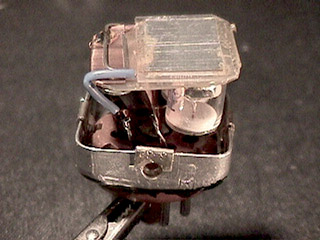This sale is for Teletronix LA2A original vintage opto limiter. It is a used unit coming from clean studio environment. It is the 2nd item from bottom in photo and does NOT include any of the other items pictured. One owner item and rarely/gently used. The item dates to early 60s and is all original. the power transformer was replaced recently and the unit was tested and works perfectly. . Below is an pasted original description but if you are buying this you probably know all about it already.
In the early 1950s, Jim Lawrence, a young University of Southern California-degreed electrical engineer, was quietly asked to join Cal Tech’s Jet Propulsion Laboratory (JPL), where he was assigned the task of developing optical sensors for the Titan Missile Program. Little did he know at the time that his work on this Cold War-era project would spawn the Teletronix® LA-2A Leveling Amplifier — one of the most iconic compressors in history.
The Birth of the Optical Limiting Amplifier
Jim Lawrence was born in 1924 and served in the Navy during WWII as a radar operator, studied electrical engineering and worked at JPL in his younger years, but he was also able to apply his skills to his true passion — radio and broadcasting. During a stint at KMGM in Los Angeles, he became frustrated with having to ride the gain to maintain a constant signal level on the air. From that frustration was born the idea of a “leveling amplifier.”
His revolutionary idea was to create the world’s first leveling amplifier utilizing optical sensors. Lawrence drew from his background with military optical sensors to design a circuit which would “level” the incoming audio signal. He combined a luminescent panel with photo resistors (whose impedance changes relative to light intensity) and sealed them in a vacuum-tube-sized metal canister. This optical attenuator, known as the T4, is what gives the LA-2A its gentle, program dependent optical compression, revered to this day by audio professionals worldwide.
The Sound of The LA-2A

Brochure for the Putnam-era
LA-2A Leveling Amplifier.
Why has the LA-2A remained so popular for recording engineers of all stripes, even fifty years after its original design? It’s all about the slow, gentle, and versatile multi-stage release time. “It treats your signal so lovingly,” says Bill Putnam Jr., CEO of Universal Audio. “It’s inspiring to sing through psychologically. It responds especially well to the human voice in a way that inspires performance.”
The T4 optical attenuator in the LA-2A is both program and frequency dependent, allowing the compression ratio to vary greatly based on the source material. The average attack time is fixed at 10 milliseconds, but its unique release characteristic is what gives the LA-2A its definitive sound. While the initial release time is about 60 milliseconds for 50% of the release, the following 50% happens gradually over a period of one to 15 seconds before the signal comes back to 100%.
This timing of the release depends heavily on the length and strength of the incoming signal. If compression is heavy or the signal is above the threshold for a long duration, then the release will be slower. If the signal is below the threshold, then the release will be faster. Users may notice that it takes quite some time for the meter to return to 0 VU (no compression) after a long period of heavy compression.
How The LA-2A Works
The LA-2A Leveling Amplifier has only a single gain stage and is one of the simplest compressors to operate with two knobs: Gain and Peak Reduction. The fact that it offers 40 dB of gain from input to output allows it to also be used as a preamp and compressor.

The inside of a T4A optical attenuator. Note the
electroluminescent panel on the top.
Let’s look inside the T4 optical attenuator, which is the heart of the LA-2A. The T4 cell’s primary components include an electro-luminescent panel and dual cadmium-sulfide photo resistors, one of which controls gain reduction, and the other the VU meter in Gain Reduction mode. How does it work? As the input signal increases, the light panel gets brighter. As the light gets brighter, the photo resistor’s impedance increases which reduces the gain. As the input level decreases, the light dims and the resistor’s impedance decreases. Whether by serendipity or intent, Jim Lawrence’s T4 design had a musical response that allowed the LA-2A the sonic and technological longevity it still retains.
“The heart and soul of the LA-2A is in the T4 cell,” explains Bill Putnam Jr. “All of the characteristics are right there. The photocell and the physics behind it are what immediately result in the two-stage release.”
Though the T4 cell makes the LA-2A shine, the overall transformer and tube amplifier design of the LA-2A also plays a huge part in its longevity and popularity. Though there have been reissues of the LA-2A, very little has changed from the original design, which is a testament to its reliability and linear response.